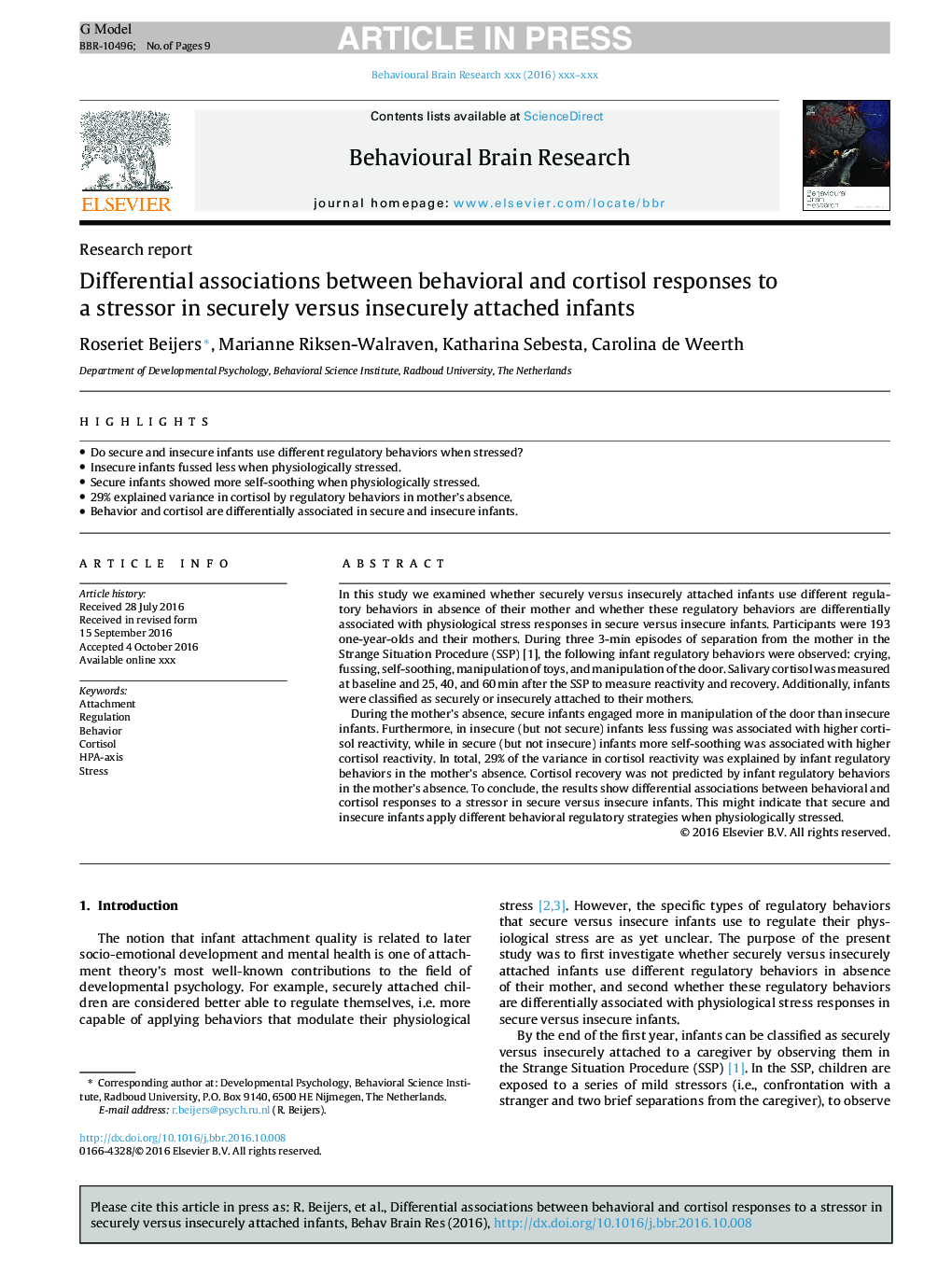| Article ID | Journal | Published Year | Pages | File Type |
|---|---|---|---|---|
| 5735463 | Behavioural Brain Research | 2017 | 9 Pages |
Abstract
During the mother's absence, secure infants engaged more in manipulation of the door than insecure infants. Furthermore, in insecure (but not secure) infants less fussing was associated with higher cortisol reactivity, while in secure (but not insecure) infants more self-soothing was associated with higher cortisol reactivity. In total, 29% of the variance in cortisol reactivity was explained by infant regulatory behaviors in the mother's absence. Cortisol recovery was not predicted by infant regulatory behaviors in the mother's absence. To conclude, the results show differential associations between behavioral and cortisol responses to a stressor in secure versus insecure infants. This might indicate that secure and insecure infants apply different behavioral regulatory strategies when physiologically stressed.
Related Topics
Life Sciences
Neuroscience
Behavioral Neuroscience
Authors
Roseriet Beijers, Marianne Riksen-Walraven, Katharina Sebesta, Carolina de Weerth,
